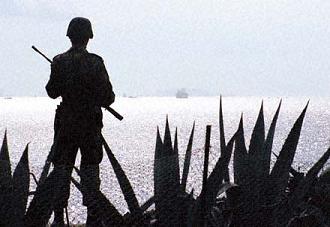US-Philippines Military Alliance Could be Detrimental to the Philippines in the Outbreak of Taiwan Conflict

All Global Research articles can be read in 51 languages by activating the “Translate Website” drop down menu on the top banner of our home page (Desktop version).
To receive Global Research’s Daily Newsletter (selected articles), click here.
Visit and follow us on Instagram, Twitter and Facebook. Feel free to repost and share widely Global Research articles.
***
The provocative visit of US House Speaker Nancy Pelosi to Taiwan on August 2, 2022 has caused major uproar not just from China but even from other peace-loving states. Pelosi’s visit has breached America’s One-China Policy, which formally acknowledges only one Chinese government and maintains the position of Taiwan being a breakaway region of China. Even prior to Pelosi’s visit, recent developments surrounding Taiwan have already escalated tensions between the two major powers and further soured their diplomatic relations. The trip occurs against the backdrop of express military agreement between the US and Taiwan, thereby sending a wrong signal to mainland China.
By ignoring China’s strong objections to Pelosi’s Taiwan visit, the US egregiously imperils regional stability and peace, and endangers an imminent outbreak of war between Taiwan and mainland China.
What are its implications for the Philippines, a small state that is 719.4 miles south of Taiwan?
Map of the Philippines in relation to Taiwan and China (Source: The Diplomatic Envoy, Seton Hall University via The Maritime Review)
US-Philippines Mutual Defense Treaty
The southeast asian state pursued a flawed ‘independent foreign policy’ at the helm of former president Rodrigo Duterte, who threatened to abrogate the US-Philippines Visiting Forces Agreement (VFA), a component of the US-Philippines Mutual Defense Treaty (MDT). The VFA is a mutual military agreement that allows US troops, under the provisions of the Enhanced Defense Cooperation Agreement (EDCA), “access to designated Philippine military facilities, the right to construct facilities, and preposition equipment, aircraft, and vessels, but rules out permanent basing.” The maverick leader flirted with the idea of cooperating with the Russian Armed Forces and China’s People’s Liberation Army, but reverted his decision and withdrew the termination of the VFA. This move came amid the increasing tension in the South China Sea, where the Philippines is a claimant state.
Incumbent president Ferdinand Marcos Jr. vowed to continue Duterte’s foreign policy trajectory, iterating the slogan, “a friend to all, an enemy to none”. But it seems just another hot air as the country’s plans for US forces are back on track, including the building of facilities for US troops at five military bases — one in Palawan whose proximity to the South China Sea makes it conducive to conducting surveillance flights. Further, the Philippine navy begins to station at the Subic Bay Naval Base, which sits facing the South China Sea, with a view to “countering China’s increasing assertiveness in the contested waters“. The port authority head intimated the welcomed presence of the US navy as a balancing force against the formidable Chinese counterpart.
The crux of the US-Philippines joint military exercises and cooperation agreements is clear and definite: to counter China through the South China Sea crisis. Disaster relief, counterterrorism, etc. are just the tip of the iceberg. What is hidden from the Filipino public is the hegemon’s motive of encircling the emerging superpower — under the guise of a routine military exercise and training aimed at enriching military capabilities towards “maintaining a free and open Indo-Pacific region“.
The Philippines in the event of a Taiwan-China conflict
The Philippines engages in economic and trade relations with Taiwan but maintains diplomatic relations only with mainland China. Amid the rising tension in the Taiwan Strait, the Philippine government released a brief but straightforward message, claiming adherence to the One-China Policy and the importance of diplomacy and dialogue.
Analysts lambasted the press release as “tiptoeing” around a major economic partner by “refusing to give any more comments”. “Tiptoe” is a misnomer with the ongoing US-Philippines military exercises — aimed at countering China — in the background. Having US troops and military equipment in the Philippine soil, the southeast asian state will become heavily embroiled in the event of a war outbreak between Taiwan and China, given America’s expression of military support to Taipei.
The volatility of the security architecture in the Indo-Pacific region should prompt a more open and honest dialogue and military diplomacy among the concerned states. The Philippines should limit, if not repeal, the provisions of the Mutual Defense Treaty with the US if it is serious in its commitment to an independent foreign policy.
*
Note to readers: Please click the share buttons above or below. Follow us on Instagram and Twitter and subscribe to our Telegram Channel. Feel free to repost and share widely Global Research articles.
Jezile Torculas has a bachelor’s degree in Political Science. She is an Assistant Editor at the Centre for Research on Globalization (CRG).


